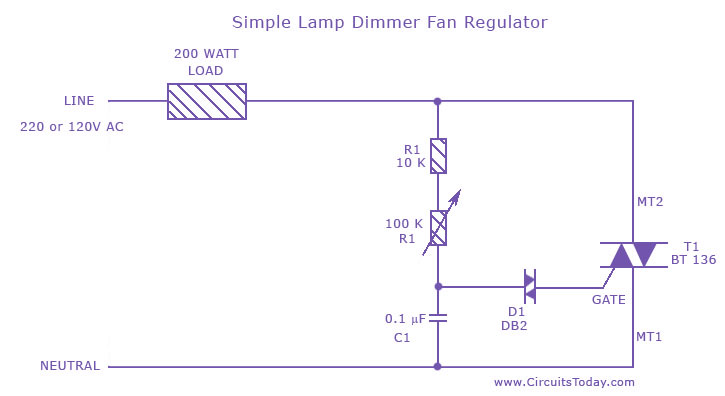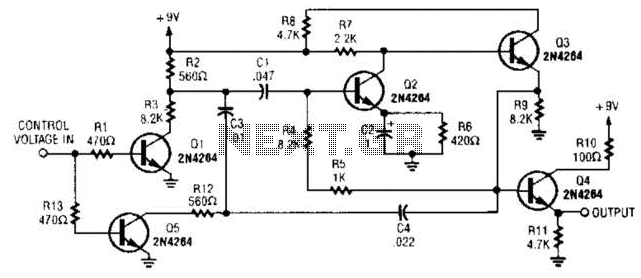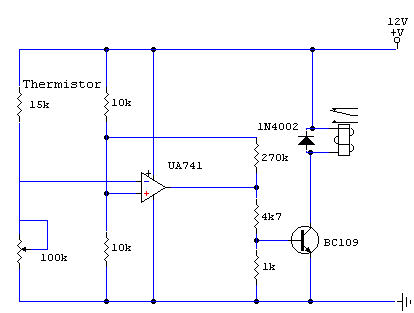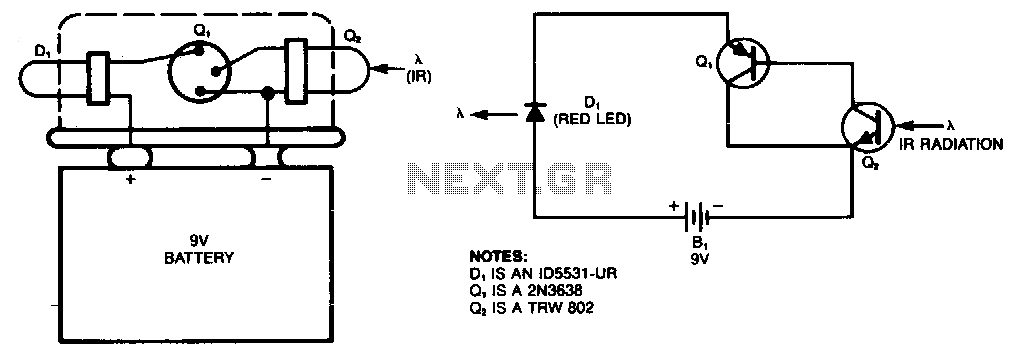
Simple Lamp Dimmer/ Fan Regulator Circuit

A fan regulator circuit that can also function as a simple lamp dimmer circuit. This fan speed regulator or light dimmer operates based on power control using a triac.
The fan regulator circuit is designed to control the speed of a fan or the brightness of a lamp by adjusting the power delivered to the load. The primary component in this circuit is a triac, which is a type of semiconductor device that can control power by switching on and off in response to a gate signal.
In operation, the triac is triggered into conduction by a gate pulse, allowing current to flow through the load. The timing of this gate pulse can be adjusted, which effectively alters the average power supplied to the fan or lamp. This is achieved through the use of a phase control technique, where the triac is turned on at a specific point in the AC waveform. By delaying the firing angle of the triac, the power delivered to the load can be reduced, resulting in lower fan speeds or dimmer light output.
The circuit typically includes additional components such as resistors, capacitors, and diodes, which work together to form a control circuit for the triac. A potentiometer may be included to allow for user adjustment of the speed or brightness. The circuit may also feature protective elements such as fuses or snubber circuits to safeguard against voltage spikes and ensure reliable operation.
Overall, this fan regulator or lamp dimmer circuit is a practical solution for applications requiring variable speed control or brightness adjustment, providing a simple yet effective means of managing electrical loads in residential or commercial settings.A fan regulator circuit which can also be used as a simple lamp dimmer circuit.This fan speed regulator or light dimmer is based on power control using triac.. 🔗 External reference
The fan regulator circuit is designed to control the speed of a fan or the brightness of a lamp by adjusting the power delivered to the load. The primary component in this circuit is a triac, which is a type of semiconductor device that can control power by switching on and off in response to a gate signal.
In operation, the triac is triggered into conduction by a gate pulse, allowing current to flow through the load. The timing of this gate pulse can be adjusted, which effectively alters the average power supplied to the fan or lamp. This is achieved through the use of a phase control technique, where the triac is turned on at a specific point in the AC waveform. By delaying the firing angle of the triac, the power delivered to the load can be reduced, resulting in lower fan speeds or dimmer light output.
The circuit typically includes additional components such as resistors, capacitors, and diodes, which work together to form a control circuit for the triac. A potentiometer may be included to allow for user adjustment of the speed or brightness. The circuit may also feature protective elements such as fuses or snubber circuits to safeguard against voltage spikes and ensure reliable operation.
Overall, this fan regulator or lamp dimmer circuit is a practical solution for applications requiring variable speed control or brightness adjustment, providing a simple yet effective means of managing electrical loads in residential or commercial settings.A fan regulator circuit which can also be used as a simple lamp dimmer circuit.This fan speed regulator or light dimmer is based on power control using triac.. 🔗 External reference
Warning: include(partials/cookie-banner.php): Failed to open stream: Permission denied in /var/www/html/nextgr/view-circuit.php on line 713
Warning: include(): Failed opening 'partials/cookie-banner.php' for inclusion (include_path='.:/usr/share/php') in /var/www/html/nextgr/view-circuit.php on line 713





